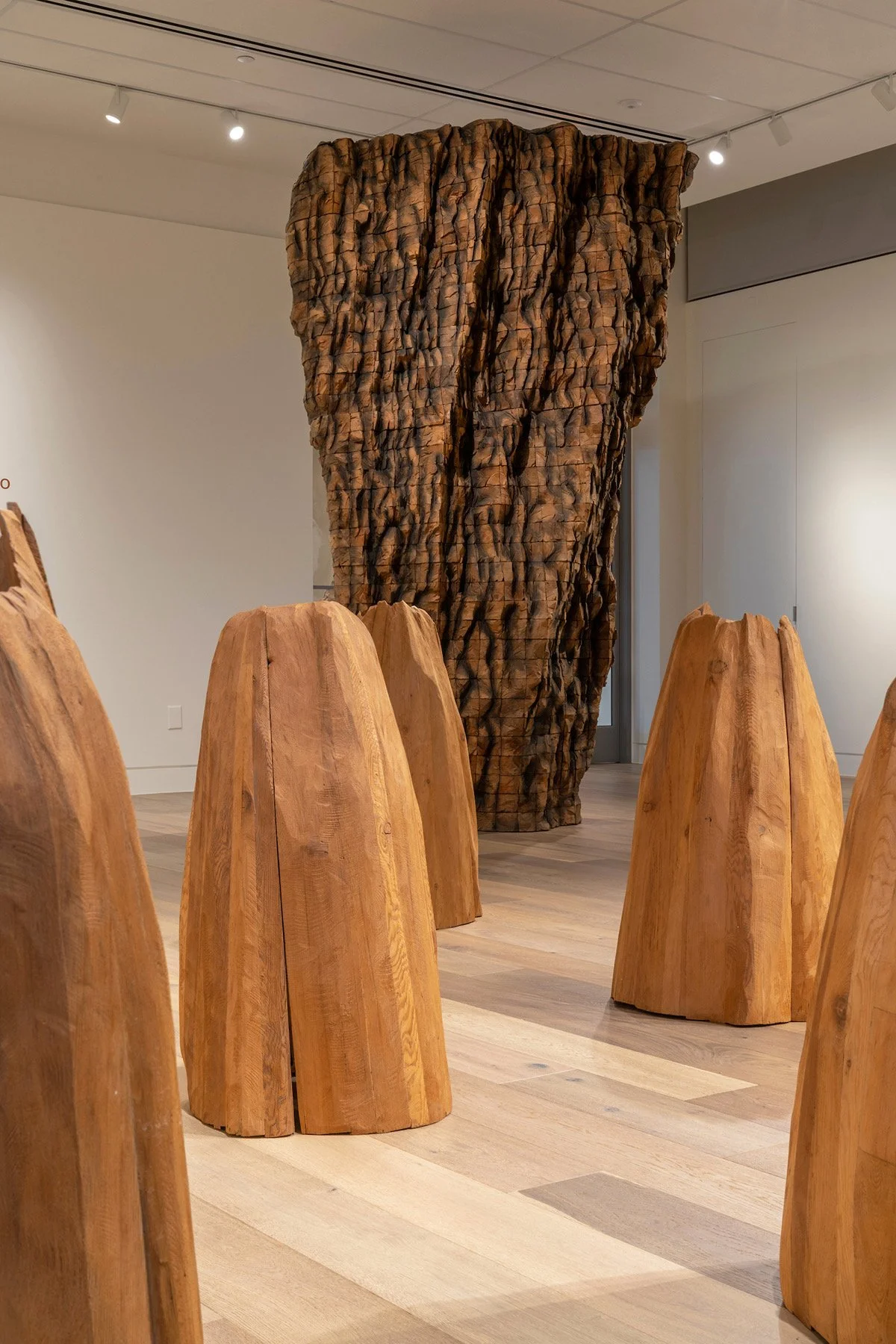Ghost Forest
Ghost Forest: Works by Melanie Walker
Denver Botanic Gardens
1007 York Street, Denver, CO 80206
Sept. 26-Dec. 6, 2020 (Indoor Galleries Closed Due to COVID)
Admission: Adults: $15, Seniors & Military: $11.50, Children & Students: $11, Children 2 and Under and Members: Free.
Review by Jamie Sheffield
One of the most arresting things about Colorado-based artist Melanie Walker’s 2020 exhibit Ghost Forest—now showing at the Denver Botanic Gardens—is its exacting use of space…and silence.
The photographs in Walker’s exhibition depict trees, branches, and leaves, all printed on various fabrics. Some are pressed and slight, others crumpled to create tactile creases. Yet each image is an eerie, mirror-counterpart to something else in our own world. The fold in a leaf reveals lips, the knobs or gashes on aspen tree bark become eyes peering out blankly. Nature, after all, is ancient and humans are just passersby, stealthily observed by lifeforms such as these.
An installation view of Melanie Walker’s exhibit Ghost Forest at the Denver Botanic Gardens on York Street. Image by Scott Dressel-Martin, courtesy of the Denver Botanic Gardens.
Walker is heavily influenced by the mechanics of photography too, evident in the presentation of Ghost Forest. The artist meticulously prints the images on the fabrics. She uses color sparingly. Only two lone pieces in the exhibit feature a Technicolor blue, almost assaulting the eye when placed next to the black, white, grey, and amber tones of the others around them. She cuts the photos of leaves or bare branches into orderly squares then curls them at the ends slightly to create a sensation that they are dancing in the breeze and moving above. With each image almost mathematically affixed on a single wire just so, the fabric photos levitate and jitter lazily, unencumbered and vibrating with the airflow of the room.
Melanie Walker, Tree Trunks, 2020, archival pigment prints on habotai 5mm silk, variable sizes. Image by Jamie Sheffield.
The centerpiece of the exhibit is a constructed forest of more than 20 aspen-like tree trunks printed on sheer silk. Walker suspends each strip of fabric from the ceiling and she has sliced each in barely perceptible curves to make them scrim-like but limp, almost like crepe paper skins. As the aspen trunk images move with the air in the room, disembodied from a crown of foliage above and un-rooted from the earth below, they reveal subtleties in the lattice-like marks on the bark and the “eyes.” They give you a sensation not unlike being truly alone in a forest, taking in swaying trees and the ambient noise all around you while also experiencing the alienness of moving among nature.
Melanie Walker, The Leaves: Leaves of Absence, toned cyanotypes on fabric and mica. Image by Scott Dressel-Martin, courtesy of the Denver Botanic Gardens.
On a far wall, Walker displays a series of photos of leaves, many cut jaggedly in rounded shapes and looking as though pinned under a microscope. In this series, like the aspen trees, the artist affixes the fabric with thin posts or wires to invite natural, slight movements. One particularly striking piece among these Walker has constructed with two overlaid translucent pieces of fabric, super-imposing a single leaf in grey and black, curling at opposite ends, like mirror images under glass. Also included on this far wall is one of the two pieces in the exhibit using vivid blue as a dominant color scheme (a blue cyanotype).
Detail views of the series The Leaves: Leaves of Absence by Melanie Walker. Top image by Jamie Sheffield and bottom image by DARIA.
Ghost Forest continually invites and plays with ideas of the dreamlike images present in nature—specifically leaves and trees that can be excised from an urban landscape. Walker exhibits her work in ways that emphasize the silence and space that not only move around them, but also their surroundings. We breathe in the netherworld she conjures beautifully.
Jamie Sheffield lives in Denver, Colorado, and has been writing since prior to graduating college with a B.A. in Journalism from the University of South Carolina at Columbia. On weekends, he is often seen scribbling in a notebook in unforgivingly low-lit bars throughout the city, scowling over vinyl bins in record shops, or extolling the virtues of ‘70s Italian horror films to those foolish enough to listen.












